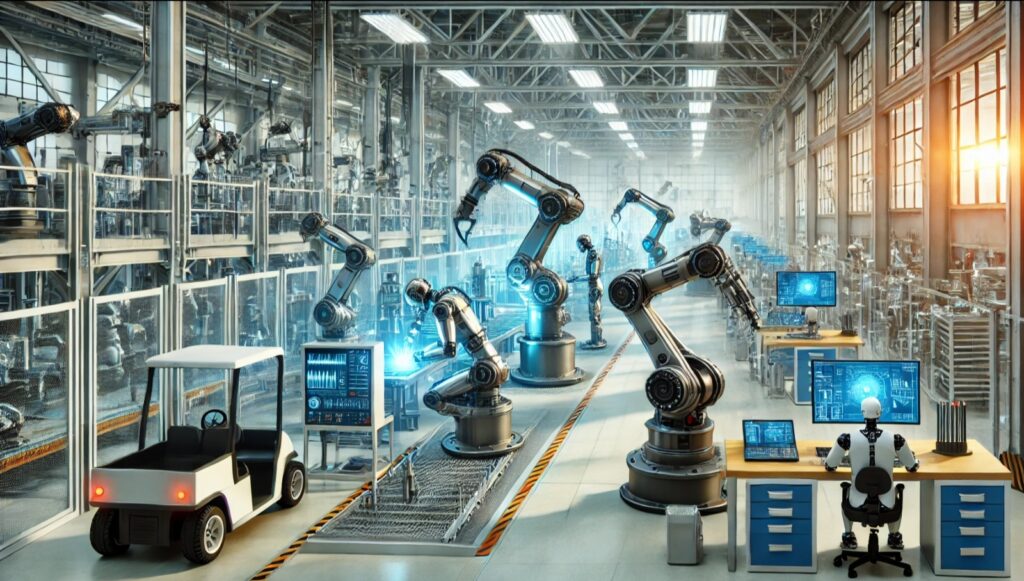Automated robots have revolutionized manufacturing by enhancing efficiency, precision, and consistency. These robots use advanced sensors, intelligent software, and mechanical components to perform tasks that once required human labor. With their ability to work tirelessly and without error, automated robots have significantly reduced production times and minimized defects. By integrating these sophisticated machines into assembly lines, manufacturers can maintain high standards of quality while cutting costs and boosting productivity.
Furthermore, automated robots are not limited to repetitive tasks. They can handle complex operations that demand high levels of dexterity and accuracy, such as welding, painting, and packaging. Equipped with machine learning algorithms, these robots can adapt to new tasks and continuously improve their performance over time. This adaptability ensures that manufacturing processes remain flexible and can quickly respond to changing market demands.
In addition to their technical capabilities, automated robots also contribute to creating safer work environments. By taking over hazardous and physically demanding tasks, they reduce the risk of injuries and allow human workers to focus on more creative and strategic roles. As a result, the collaboration between humans and robots is fostering innovation and driving the industry forward into a new era of smart manufacturing.
Programming & Control
Factory robots operate based on carefully designed software and algorithms. Engineers program them to follow specific instructions using industrial programming languages and interfaces. Many robots are controlled by Programmable Logic Controllers (PLCs) or industrial computers, allowing them to execute tasks with high accuracy.
With advancements in AI and machine learning, some robots can analyze data, optimize their actions, and even adapt to new tasks without human intervention. This makes them highly flexible and efficient in modern production lines.
Sensors & Perception
To interact safely and effectively with their environment, factory robots rely on a variety of sensors:
– Vision systems (Cameras, LiDAR, Infrared Sensors) detect objects, recognize patterns, and guide movements.
– Proximity sensors prevent collisions by detecting obstacles.
– Force and pressure sensors help adjust grip strength when handling delicate materials.
These sensors allow robots to work with precision, ensuring high-quality manufacturing while minimizing errors.
Motion & Actuation
Movement in factory robots is powered by a combination of:
– Motors and gears that control robotic arms and conveyors.
– Hydraulic and pneumatic systems that provide power for lifting and moving heavy objects.
Some robots follow pre-programmed paths, while others use real-time sensor data to adjust their movements dynamically, making them more adaptable to changing conditions on the production floor.
Connectivity & Automation
Factory robots are integrated into smart manufacturing systems through IoT (Internet of Things) technology. They connect with centralized management software, enabling:
– Real-time monitoring of production performance.
– Predictive maintenance, which helps identify potential failures before they happen.
– Seamless coordination with other machines and human workers for an optimized workflow.
Types of Factory Robots
Different types of robots serve various roles in manufacturing:
– Industrial Robotic Arms – Perform assembly, welding, and material handling.
– Automated Guided Vehicles (AGVs) – Transport raw materials and finished products across the factory floor.
– Collaborative Robots (Cobots) – Work safely alongside humans in tasks requiring precision.
– Pick-and-Place Robots – Handle sorting, packaging, and logistics with high-speed accuracy.
The Future of Factory Automation
With continued advancements in robotics, AI, and machine learning, factory automation will become even more intelligent and autonomous. Factories will rely on self-optimizing robots that communicate with each other and adapt to changing demands, further enhancing efficiency and reducing operational costs.
As technology evolves, robots will not only enhance productivity but also create safer and more innovative working environments in the manufacturing industry.

